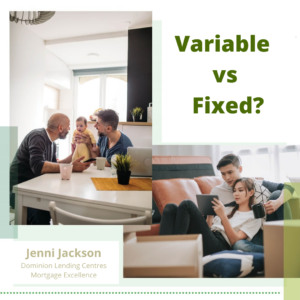
Building a home from the ground up can be both an exciting and a daunting experience. On one hand, it is exciting to be able to choose your land, your home plan, and the finishes. On the other, a build requires extensive planning with not only the build itself, but also regarding landscaping, services, and the financing of it all. This is why it is important to surround yourself with professionals from the very beginning so you can have a clear plan moving forward.
As a Mortgage Broker, I always strive to ensure that my clients are aware of all options and have assistance throughout the financing process. With a new build, there are two options regarding your mortgage: you can have either a Completion Mortgage or a Draw Mortgage. A completion mortgage is where you enter into a purchase agreement with the builder, but they carry all costs until completion – including the land and services. Your builder will require a deposit, which will be held in trust with a Solicitor and will form part (or all) of your down payment. Once the property is ready for possession, your mortgage will be funded and the builder will be paid.
A draw mortgage will allow the Builder access to funds during the build in stages. This process is more involved than the completion mortgage, but has it’s advantages as well. Here are some important points to consider:
- Land Purchase:
- You will need to have purchased the land you’re going to build on before starting the build and will require a minimum 25% down payment on the land itself
- This mortgage will then get paid out as part of the mortgage draws for the build (typically this is paid out on the first draw of your mortgage)
- If your land is not serviced, you will need to pay for these with cash unless the builder adds these into the construction quote and manages the installation.
- Down Payment:
- You’ll need a minimum of 5% down payment on the total (completed) value of the property if this will be owner-occupied. An investment property will require a greater down payment (20% or more). Your builder will also require a deposit to begin the build – this will form part of your down payment and will be held in trust with a Solicitor.
- The value of the land, services (if already in place), and completed build will be determined via an appraisal. This appraisal will break down the value of the land and the home separately, as well as give value to the total package as if your build were 100% complete
- As long as your equity in the land and services is equal to or greater than 5% of the total appraised value for the as-complete property, this can be used for 100% of your down payment. For example, if your land is valued at $120,000, you would need a $30,000 down payment. If your as-complete value is $650,000; you can use the $30,000 land equity towards your total down payment on the build – the minimum down payment required for a $650,000 purchase is $40,000 and so you would only need an additional $10,000 for down payment.
- If you would like to add cash to have a greater down payment, you can definitely do this as well
- Builder Requirements
- The builder will need to be a new home warranty certified builder
- They’ll provide you with a purchase contract, detailed list of finishing options (often accompanied by a list of cost allowances) and a copy of the plans. The appraiser will use these to determine the value of the home at completion
- Mortgage Payments
- During the build you will only pay interest on the portion of funds that have been advanced to the builder.
- Funds are released in ‘draws’ – payments – based on specific completion stages, as outlined by the lender. The final draw will be released for the builder once the home is 100% complete and ready for occupancy.
It is important to ensure that you have had a pre-approval completed prior to entering into a contract with your builder. This will not only ensure that you are qualified based on lender guidelines for the total cost of the build, but is also a great time to discuss your contingency plan in the event of cost overruns and the cost of adding services to your land, if needed.
If you would like to learn more about your mortgage options for a future build, do not hesitate to reach out!
Email: jenni.jackson@dlcme.ca
Cell: 780-897-0166

